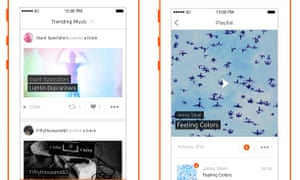New and digital media offers media institutions different ways of reaching audiences. Consider how and why media institutions are using these techniques.
Due to the development of technology causing an expansion in
the digital media means it is now easier for media institutions to reach
audiences and are able to gain a greater understanding of what their audience
want in order to reach target their audience. New and digital media offer media
institutions different ways of reaching the audiences. The case study this
essay will be looking at is the news industry and how the news industry has
played an important part in allowing the media institutions different ways of
reaching the audiences. There are many different ways in which the institutions
has reached audiences, for example the internet has allowed a gateway between
media institutions and audiences which is allowing them both to engage and know
what is happening around the world.
According the Alain De Botton: ‘News guides us – it teaches
us what is important. Due to the increase in new and digital media, the
newspaper industry has been declining. Originally, news was received through
word of mouth. From the 17th century to early 20th
century, during the Guttenberg revolution, newspapers were the main source of
news. However, as technological changes made advances, newspapers started to
decline and digital media became a more convenient form of reaching audiences.
According to Briggs and Burke, ‘The internet is the most important medium of
the 21st century’. Therefore, media institutions such as Newscorp
(owned by Rupert Murdoch) had to adapt and change along with the media to be
able to continue their audience readership.
News industries such as the times, the guardian etc. have
set up websites on the internet to gain a higher readership and to keep up with
audience demand. This has made it harder for institutions to make money as
audiences are able to get news easily online. However, some news institutions
have set up paywalls (subscriptions) in order to still make money out of their
news. For example, the times newspaper has successfully set up a paywall which
audiences have subscribed to as a means of getting reliable news. Although the
paywalls have not worked for every institution, for example, the sun’s paywall
did not succeed as audiences were not willing to pay for news that they are
able to gain from every other news website and as a result they had to remove
their paywall. This could also be down to the fact that both companies have
different types of audiences and therefore have to use different strategies in
order to sustain their audience readership. Some companies have to still rely
on advertisement to make money from news on websites. However, the increase in
digital media is making this more and more difficult for institutions as there
are now apps like ‘ad blocker’ on the apple store and play store on mobile
phones to block out these ads. Also, as audiences now search through google,
advertisement revenues are going straight to google and increasing its power
and threat on the existence of the newspaper industry. This supports Parettos
law where power has been concentrated in the hands of a few and a minority of
media institutions dominate the industry. Institutions such as the independent have
already suffered from the decline in newspapers as they have turned to an online
only news company and abandoned print. This shows that institutions are using
and adapting to these new techniques as a means of survival.
The threat of new and digital media and the internet has led
to a decline of newspaper circulation and revenue. This has causes newspaper
institutions to turn to desperate measures in order to gain a breaking story to
attract readers. Rebecca Brookes and the News of the world phone hacking scandal
is an example of the unethical journalist behaviour that had used controversy
in order to gain an audience. However it could be argued that this scandal
would not have tsken place if the technology to make it happen didn’t exist.
This shows that new techniques may need to be used in order to prevent losing
readers.
Along with the increase of new and digital media, social networking
sites have also been expanding amongst audiences. Social media such as Twitter,
Facebook, Snapchat etc. are a platform on which institutions are able to reach
a wider target audience and makes it more convenient for both audiences and
institutions to deliver and receive news. Newspaper companies are now able to
crate accounts of social networks to continue giving audiences news directly
and focus on individual stories. From Galtung and Ruge’s news values, the value
of immediacy can be applied here as audiences gain access to breaking news
faster from social networks before it is even published on newspapers. According
to ‘news on the tweet’, twitter is used to gain and connect with younger
readers and a different audience much more efficiently and immediately. This
element of immediacy allows more readers to engage with the news which is why
institutions would use these new techniques.
Social networking sites also allow audiences to interact and
participate in the news delivering process. The use of hashtags on twitter
allow trends to inform to notify the audiences of a certain breaking story. For
example, the use of the hashtag ‘#prayforparis’ allowed audiences to find out
and sympathise with the terrorist attacks in Paris. Also, audiences themselves had
recorded certain attacks at the time which allowed others to see the severity
of the attacks which some journalists could not have gained footage of. The
rise of user-generated content (UGC) and citizen journalism has allowed
audiences to play an active part in the news industry. According to Paul Lewis,
‘citizen journalism provides a new layer of accountability.’ This is because it
has uncovered the other side of many big stories. For example, with the death
of Eric Garner, the video was posted by the citizens and uncovered that the police
were to blame. Without this proof, the truth would not have been known. Having citizen
journalism allows audiences to receive a real, less mediated story due to the absence
of gate keeping which could be seen as both a strength and weakness as although
it may be providing a true account of something, the story may not be verified.
User-generated content such as blogs have allowed audiences to create their own
news or publish other news themselves. However, Andrew Keen links webpages and
blogposts to the activity of a million monkeys typing nonsense. This means that
audiences the produce ugc are not really aware about what they are saying and
therefore could be a misleading source of news.
There have been
many changes and developments in technology and the new/digital media which has
created a new platform for audiences and institutions to adapt to. The new
techniques used by institutions have given the audience more power and a place
to interact and grow whilst getting the knowledge they need in a much
more convenient way. A Marxist perspective would argue that the
so-called “information revolution” has done little to benefit audiences or to
subvert the established power structures in society. Far from being a “great
leveller” (Krotoski, 2012) as many have claimed, it has merely helped to reinforce
the status quo by promoting dominant ideologies. The most popular news website
in the UK by a considerable margin is the ‘Mail Online’, which receives more
than 8 million hits every month and is continuing to expand rapidly – with
forecasts that it will make £100 million or more in digital revenues in the
next three years. Similar to its tabloid print edition, the website takes a
conservative, right-wing perspective on key issues around gender, sexuality and
race and audiences appear to passively accept what the Marxist theorist,
Gramsci, called hegemonic view. When one of their chief columnists, Jan Moir,
wrote a homophobic article about the death of Stephen Gately in 2009 there were
Twitter and Facebook protests bit, ultimately, they did not change the
editorial direction of the gatekeepers controlling the newspaper.
A pluralist perspective would argue that the audience has the
ultimate power in terms of production and consumption. This is due to the face
that audiences are seen as capable of manipulating the media in many ways
according to their needs and having access to. They are able to ‘conform,
accommodate, challenge or reject’ (Gurevitch et al). According to pluralists
the audience is active and can choose and select the media they want to consume
as we have free will and are not controlled. During the Arab spring protests,
many people in Egypt, Tunisia and Libya has started uprisings to get what they
want, through this they managed to achieve democracy and get their voices heard
which shows how important and powerful the audience are. The pluralists see the
internet as “the most important medium of the 20st century” (Briggs and Burke) which can
be used to find out any information needed in a more convenient way. This fits
in with the uses and gratifications theory of surveillance (Blumer and Katz).
The use of citizen journalism has created more UGC (user generated content)
which has become increasingly common. An example of citizen journalism is the
death of Ian Tomlinson which was carried out by a police officer. A member of
the public filmed the incident, which The Guardian then released soon after.
This created major controversy over the case This has also given us the ability
to share our views on more platforms such as on blogs. “The internet has given
readers much more power…the world is changing and newspapers have to adapt”
(Rupert Murdoch, Newscorp) which shows that newspapers itself are not doing so
good as it is the audience who determines the success of these businesses. This
has resulted in the “mutualisation of news” (Rushbridger), which tells us that
it is not just the gate keepers who produce news but also the audiences as it
is mutual and top down.
This shows that even
though institutions may be benefitting from the new techniques they are using
to reach audiences, they have willingly or unwillingly given a huge amount of
control to the audience. However, the control the audience have benefits some institutions
and they use these techniques in order to be successful themselves.



